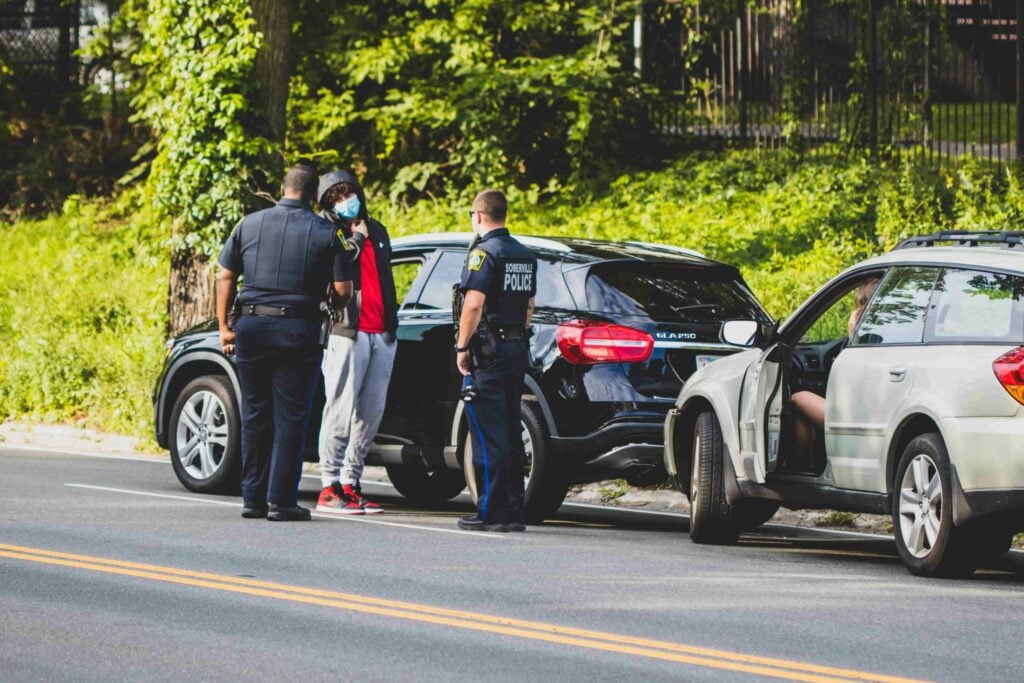Have you suffered a personal injury that caused you to miss work, rack up medical bills, and maybe even lose the use of your car or truck? Pennsylvania comparative negligence laws are in place to help you financially recover from this type of loss. You don’t have to navigate these laws alone. The legal team at GSAS can help you understand how Pennsylvania comparative negligence laws could apply to your situation.
What is “Negligence?”
At the center of nearly every court case is the question of negligence. This generally means that one person (the plaintiff) accuses another person or company (the defendant) of creating a situation that involves a potential risk of injury to others.
Many people assume that negligence is intentional but that is not always the case. A person or company may not have intended to create a situation that would lead to someone being harmed, but they can still be found negligent if an accident were to occur.
Was I Negligent?
To understand how Pennsylvania negligence laws apply to your situation, you need to understand what they are. If you were injured in some way, the court will need to decide what part of your actions contributed to that injury. Perhaps you came to an unexpected stop on a busy road or you used a piece of equipment in a way that it was not intended to be used.
In those cases, a Pennsylvania court could find you to be comparatively negligent for your own injury. In short, it means that your actions (or inaction) played some role in your injury. This is an important determination because it could affect the final amount of compensation that you could be eligible to receive.
Defining Negligence in Pennsylvania
In Pennsylvania, a court will consider comparative negligence. The law regarding Pennsylvania comparative negligence can be found in Pennsylvania state code 42 Pa C.S.A. § 7102.
The law can be summed up like this: While Kevin is driving, he is also checking Snapchat. Sally drives her dump truck out of a construction site directly in front of Kevin. An accident occurs totaling Kevin’s car.
Even though Kevin was a distracted driver, Sally’s casual negligence of pulling directly into traffic was the root cause of the accident. Her negligence in the incident is greater than Kevin’s and she would be responsible for compensating him for his losses.
A Numbers Game
When it comes to Pennsylvania’s comparative negligence laws, numbers matter. Particularly the number that the court assigns to your percentage of fault in the case.
In simple terms, say that you were involved in an accident at a business, and take a case to court to recover damages related to the accident. You win your court case and damages are assessed at $1,000. But the court finds that you were 25% at fault for the accident. This cuts the amount you will receive down to $750.
Who’s At Fault
It’s important to understand the term “At Fault” as it plays a key role in Pennsylvania’s comparative negligence law. If a person or business is deemed to be at fault then the court has decided that the individual is responsible in some part for the incident. More than one party can be found to be at fault for a single incident. Even the “victim” of an accident could be found to be at fault.
In Pennsylvania negligence cases, a person can win a case and also be found by the court to be at fault for some part of the accident. If a person is found to be at fault for more than 50% of the incident before the court, the total amount that they can receive from the plaintiff drops to $0.
How is Fault Decided?
There is no special formula for deciding fault in a court case. A judge, or jury, will need to review all of the facts of the case and compare those to the laws in place. For example, if a person were rear-ended you might think that the driver of the car who hit the car in front of them would be assigned 100% of the fault. But if the incident occurred because the driver of the car in front did not advance on a green light or because they stopped short, that driver may be assigned a percentage of the fault as well.
Another example is a business that has an area that is a potential tripping hazard. They put up a caution sign when the issue was discovered several weeks ago, but otherwise have not addressed the root cause. Person A ignores the warning sign, enters the space and falls. Fault may be decided evenly as both parties were negligent in their actions.
Proving Fault
In a legal proceeding, it is not enough to simply tell your story to prove the fault of the other party involved. While that is an important part of the case, your lawyer will want to support it with evidence.
Acceptable evidence includes:
- Medical reports
- Police reports
- Statements from witnesses including those who may have been involved in the incident (a car passenger) as well as strangers who happened to see the incident take place
- Surveillance footage of the actual incident from store security cameras, cameras mounted on red lights, cellphones, and even doorbells
- Photos of the area where the accident occurred
The information that is needed to prove the fault of a person or business will depend upon the actual incident. Working closely with your legal representatives to gather this documentation will help ensure that they have the information needed to work towards a successful outcome in court.
Accident Liability
Fault and liability can often be linked in legal cases. In negligence cases, accident liability refers to the party responsible for paying for any damages caused by the accident. For example, if you are riding your bike and a truck edges you off of the road, the driver of the vehicle may be at fault for the accident and responsible for compensation.
It is important to understand that accident liability may not depend on a court’s determination of fault. A person could be financially liable for an accident without being found to be at fault. This is often the case with “fender benders” and other minor automotive accidents that are settled by the participants and their insurance companies.
The Pennsylvania Fair Share Act
In 2011 Pennsylvania lawmakers enacted what has become commonly known as the “Fair Share Act.” Depending on the type of accident, this may be a relevant argument in Pennsylvania comparative negligence cases. The Fair Share Act says that if there are multiple defendants in a case each one will only be responsible for the part of the accident the court finds them to be responsible for.
As an example, if there were a multi-car accident, the court may find defendant A to be 30% at fault, defendant B 40% at fault, and defendant C 30% at fault with those percentages being their portion of the compensation they must pay to the victim. Of course, as with many laws, there are different conditions that come into play. For example, if one defendant is found to be more than 60% at fault then they would be responsible for the entire settlement amount.
Injury Settlements
There is often a difference in injury settlements between what the plaintiff asks for and what they are willing to settle for. Some people will ask for one amount but accept a smaller amount in order to put the issue behind them and move forward with their lives.
Many legal teams have “calculations” that can help you decide on an acceptable injury settlement amount. They will look at things like:
- Your medical bills
- Your ability to continue working
- Any property damage that was sustained (i.e. will you need a new car?)
Part of that calculation involves proving fault for the incident that led to your injury.
Recover Damages
Title 42 of Pennsylvania State law states that there is a two-year statute of limitations on personal injury claims. Once an accident occurs, the timer on that statute starts. If you want to attempt to recover damages through legal means, you should contact a lawyer as soon as possible after the accident occurs.
You can only recover damages for losses that you can prove, in court, occurred because of another party’s negligence. This means you could receive compensation for:
- Loss of property or income
- Legal fees
- Medical bills
- Payments for in-home help
- Other similar expenses
Find Help With Pennsylvania Comparative Negligence Law
If you have experienced a loss because of an accident, GSAS may be able to help. Their team of experienced attorneys have been a part of thousands of cases involving bicycle accidents, truck accidents, rideshare accidents, premises liability, and more. Get in touch with GSAS today to discuss how they can guide you through the complexities of Pennsylvania comparative negligence laws.


